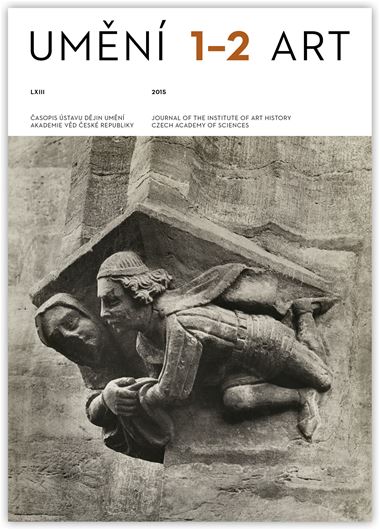Štefan Valášek
The Mediaeval Wall Paintings in All Saints Church in Ludrová (Slovakia): Artists and Artistic Influences in Central Europe in the First Half of 15th Century
Liptov was a peripheral and one of the less economically and culturally advanced areas in the historical Kingdom of Hungary. However, even in such regions it is possible to find works of art of high artistic value. The wall paintings in Ludrová–Kút are an example of this. Research on the history and cultural heritage of Liptov dates back to the second half of the 19th century. Vlasta Dvořáková, Josef Krása and Karel Stejskal were the first to study the Ludrová murals within a Central-European context. In their book, Stredoveká nástenná maľba na Slovensku (Mediaeval wall paintings in Slovakia, 1978), they identified an analogy between painted murals in the border areas of the former Kingdom of Hungary (Styria: Bruck an der Mur, Utschtal; Transylvania: Mălăncrav) and some Czech illuminated manuscripts from the early 15th century (Zmrzlíkova Bible, etc.). The author of this article found no similarity or connection with the wall paintings in the above-mentioned regions. A study by Josef Krása offers a more likely observation: that the master painter in Ludrová and his work were influenced by Czech painting books. Gerhard Schmidt has noted in the Czech beautiful style some strong tendencies towards the idealisation and restraining of emotions. He cited as one of several examples the Crucifixion scene in the Missal of Zbyněk Zajíc of Hazmburk. Similar features to it are also found in the scenes in the Christological cycle in Ludrová: the Deposition from the Cross, the Entombment, the Resurrection and Noli me tangere. Based on previous research the author concludes that the murals in Ludrová–Kút are works that were influenced by Czech art from around 1400. The similarities to some Czech illuminated manuscripts (Missal of Zbyněk Zajíc of Házmburk, Missal of Jan Strniště z Jablonného) would indicate that the master working in the presbytery in Ludrová–Kút was trained in Prague.
Full-text in the Digital Library of the Czech Academy of Sciences:
https://kramerius.lib.cas.cz/uuid/uuid:d7978485-5b69-4876-916a-8d570faf7c51
< back

